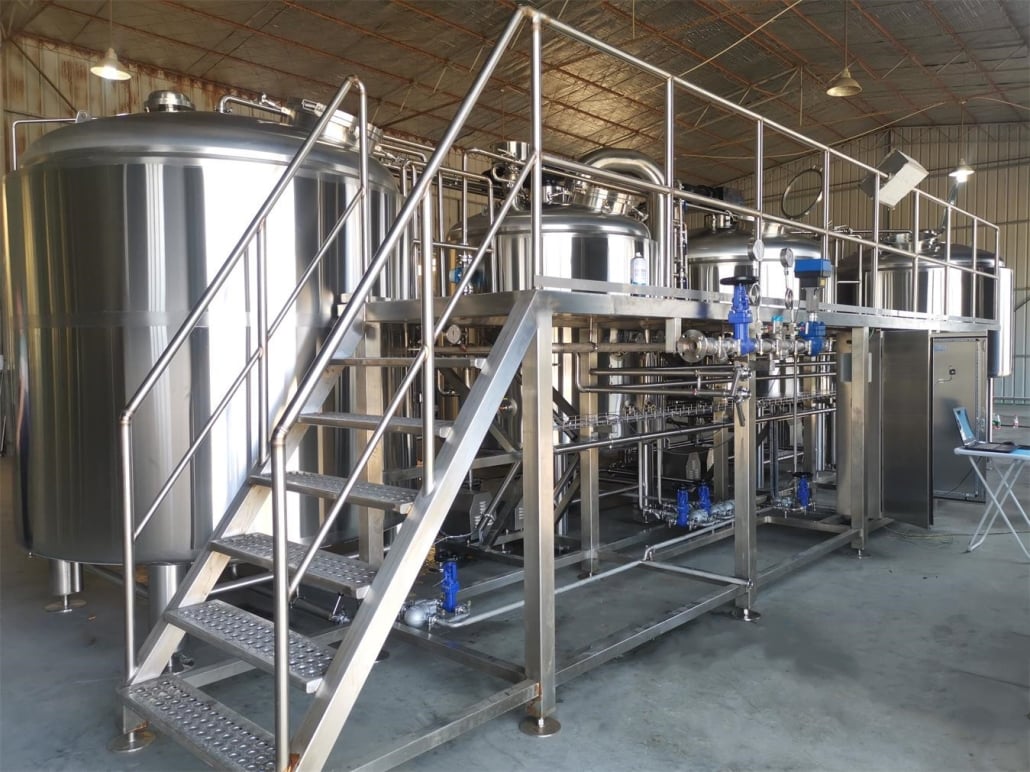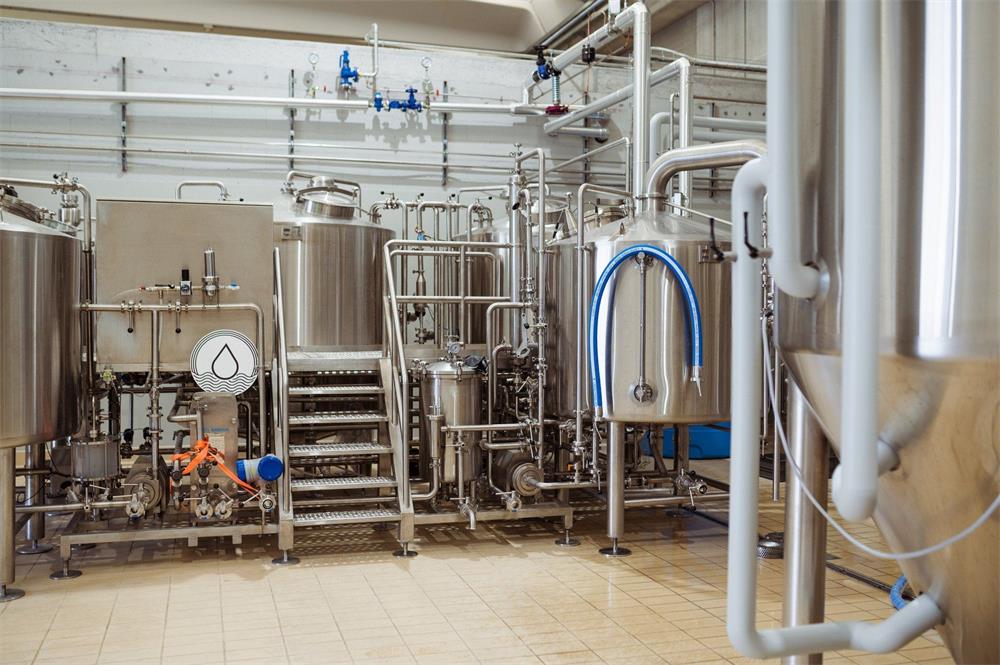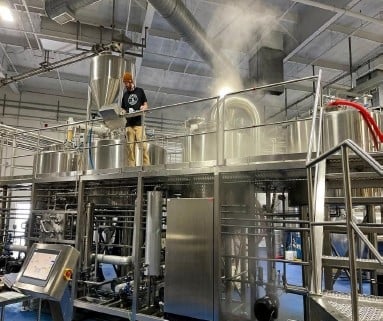Beer Brewing Vessels
Imagine this: you’ve meticulously crafted your own beer recipe, a unique blend of hops and malts that promises a flavor explosion on your taste buds. But before you can celebrate your creation, you need a vessel, a trusty companion to guide your wort (unfermented beer) through the magical alchemy of fermentation. This vessel, my friend, is your beer brewing vessel, the unsung hero of the homebrewing process.
Types of Beer Brewing Vessels
When it comes to choosing your brewing vessel, you’re presented with a delightful array of options, each with its own strengths and quirks. Here’s a breakdown of the most popular contenders:
| Vessel Type | Description | Pros | Cons |
|---|---|---|---|
| Glass Carboys | Classic and transparent, allowing you to visually monitor fermentation. | Affordable, readily available, easy to clean. | Fragile, prone to breakage, can scratch and harbor bacteria. |
| Plastic Buckets | Lightweight, economical, and come in various sizes. | Affordable, durable, easy to clean and sanitize. | Can impart plastic flavors to your beer if not high-quality, may stain easily. |
| Stainless Steel Fermenters | The professional’s choice, offering superior durability and hygiene. | Durable, easy to clean, resistant to scratches and dents, allows for pressure fermentation. | More expensive than glass or plastic, heavier. |
| Conical Fermenters | A specialized type of stainless steel fermenter with a cone-shaped bottom. | Improves yeast collection and removal of sediment, allows for easier racking (transferring beer). | More expensive than standard stainless steel fermenters, can be tippy. |
| Pressure Fermentation Tanks | Enables fermentation with CO2, creating certain beer styles and carbonating your beer in the same tank. | Allows for diverse beer styles, eliminates bottling process. | Most expensive option, requires additional equipment for pressure control. |

Choosing the Perfect Brewing Vessel: A Guide for Home Brewers
So, how do you pick the perfect vessel for your homebrewing adventures? Here are some key factors to consider:
- Batch Size: How much beer do you plan to brew in a single batch? This will determine the minimum volume required for your vessel. Typical homebrew batch sizes range from 1 gallon to 5 gallons.
- Material: Each material offers unique advantages and disadvantages. Glass carboys are budget-friendly but fragile. Plastic buckets are affordable and lightweight, but some can impart plastic flavors. Stainless steel is the most durable and hygienic option, but comes at a premium price.
- Budget: Homebrewing equipment can range from very affordable to high-end. Consider how much you’re willing to invest upfront and factor in the potential for future upgrades.
- Experience Level: As a beginner, a simple glass carboy or plastic bucket might be a great starting point. As you gain experience, you might graduate to a stainless steel fermenter for its advanced features.
- Aesthetics: Let’s be honest, some brewing vessels are downright beautiful. If you have the space, a gleaming stainless steel fermenter can add a touch of professional flair to your home brewery.
Features of Beer Brewing Vessels
Beyond the basic types, brewing vessels can come equipped with a variety of features that enhance your homebrewing experience. Here are some noteworthy options:
- Airlocks: These ingenious little devices allow CO2 to escape during fermentation while preventing unwanted contaminants from entering your beer.
- Thermometers: Monitoring fermentation temperature is crucial for optimal beer quality. Some vessels have built-in thermometers, while others require separate attachments.
- Pressure Relief Valves: For pressure fermentation techniques, a pressure relief valve ensures safety by releasing excess pressure buildup.
- Sampling Ports: These handy ports allow you to extract small amounts of beer for taste testing or gravity measurements without disturbing the entire batch.
- Taps: Mounted directly on the fermenter, taps simplify racking (transferring) your beer for bottling or kegging.
Capacity, Space Considerations, Design, Layout & Customization
Now that you’re familiar with the vessel types and features, let’s delve into some practical considerations:
- Capacity: Choose a vessel that comfortably accommodates your desired batch size, leaving enough headspace to prevent overflow during fermentation’s foamy frenzy.
- Space: Measure your brewing area and ensure your chosen vessel fits comfortably. Remember, you’ll also need space for hoses, siphons, and other brewing equipment.
Suppliers & Price Range
When it comes to acquiring your trusty brewing vessel, you have a wealth of options at your fingertips. Here’s a glimpse into some popular suppliers and the price ranges you can expect:
| Supplier | Examples | Price Range (USD) |
|---|---|---|
| Homebrew Shops: These stores cater specifically to homebrewers and offer a curated selection of equipment. | Glass Carboys (1 Gallon): $10-$20 | Plastic Buckets (5 Gallons): $15-$30 |
| Online Retailers: Major online retailers offer a vast selection of brewing equipment, often at competitive prices. | Expect similar price ranges as homebrew shops, with the potential for occasional discounts and sales. | |
| Second-Hand Marketplaces: A budget-friendly option for finding gently used brewing equipment. | Prices can vary significantly depending on condition and brand. |
Installation, Operation & Maintenance
Once you’ve welcomed your new brewing vessel home, it’s time to get acquainted! Here’s a quick rundown on installation, operation, and maintenance:
- Installation: Most brewing vessels require minimal setup. For some fancier models, you might need to attach features like taps or thermometers following the manufacturer’s instructions.
- Operation: Using your vessel will vary depending on the type and features. Generally, you’ll transfer your cooled wort (unfermented beer) into the sanitized vessel, pitch your yeast, and attach an airlock. Fermentation will take its course, and after a designated time, you’ll siphon or transfer your beer for secondary fermentation, bottling, or kegging. Consult your specific recipe and equipment instructions for detailed steps.
- Maintenance: Proper cleaning and sanitation are paramount for successful brewing and preventing contamination. After each use, thoroughly wash your vessel with hot water and a no-rinse sanitizer. For stubborn grime, a soak with a specialized cleaning solution might be necessary. Regularly inspect your vessel for cracks, scratches, or leaks, and replace any worn-out parts promptly.
Choosing the Right Brewing Vessel Supplier
With a plethora of suppliers vying for your attention, selecting the right one can feel overwhelming. Here are some key considerations to navigate the marketplace:
- Reputation: Research the supplier’s reputation for quality products, customer service, and competitive pricing. Online reviews and forums can be valuable resources for gathering insights from other homebrewers.
- Selection: Does the supplier offer a diverse range of brewing vessels to suit your needs and budget? Consider if they carry the specific type and size of vessel you’re interested in.
- Shipping: Factor in shipping costs and delivery timelines, especially when considering online retailers.
- Return Policy: A clear and fair return policy provides peace of mind in case the vessel arrives damaged or doesn’t meet your expectations.
- Customer Service: Does the supplier offer helpful customer service in case you have questions or require assistance? Look for a supplier with knowledgeable staff or readily available resources.
Pros & Cons of Different Beer Brewing Vessel Types
We’ve explored the various types of brewing vessels, but let’s take a closer look at their individual advantages and limitations to help you make an informed decision:
Glass Carboys
Pros:
- Affordable
- Easy to clean and sanitize
- Transparent, allowing you to visually monitor fermentation
Cons:
- Fragile, prone to breakage
- Can scratch and harbor bacteria if not properly cleaned
- Limited size options, typically not suitable for large batches
Plastic Buckets
Pros:
- Lightweight and economical
- Durable and easy to clean
- Available in various sizes to accommodate different batch volumes
Cons:
- Can impart plastic flavors to your beer if not made from high-quality food-grade plastic
- May stain easily, requiring extra cleaning attention
Stainless Steel Fermenters
Pros:
- Durable and resistant to scratches and dents
- Easy to clean and sanitize, promoting hygiene
- Most offer the option for pressure fermentation
- Often come with features like built-in thermometers and sampling ports
Cons:
- More expensive than glass or plastic options
- Heavier and require more storage space
Conical Fermenters
Pros:
- Improve yeast collection and sediment removal for clearer beer
- Easier racking (transferring) due to the cone-shaped bottom
- Often feature additional functionalities like pressure control valves
Cons:
- Most expensive option among the common vessel
- Can be tippy and require extra stability measures
- May not be necessary for all brewing styles
Pressure Fermentation Tanks
Pros:
- Enables fermentation with CO2, creating certain beer styles like Czech Pilsners and some lagers
- Eliminates the need for separate bottling or kegging equipment for carbonation
Cons:
- Most expensive option on the market
- Requires additional equipment for pressure control and monitoring, adding complexity

FAQ
Here are some frequently asked questions (FAQ) to address any lingering doubts you might have about beer brewing vessels:
Q: How big of a brewing vessel do I need?
A: This depends on your desired batch size. Homebrew recipes typically range from 1 gallon to 5 gallons. Choose a vessel that comfortably holds your preferred batch volume with some extra headspace to prevent overflow during fermentation.
Q: What’s the difference between a carboy and a fermenter?
A: Technically, all fermenters are vessels used for fermentation, but the term “carboy” is often used specifically for glass carboys, a popular choice for homebrewing. Stainless steel fermenters offer a more professional and durable option.
Q: Can I use a food-grade plastic bucket for fermenting beer?
A: Yes, you can use a food-grade plastic bucket for fermenting beer. However, ensure it’s specifically made for food contact and BPA-free to avoid imparting plastic flavors to your brew. High-quality plastic buckets are a budget-friendly option for beginners, but they might not be ideal for long-term use due to potential staining and scratching.
Q: Do I need a pressure fermentation tank?
A: Pressure fermentation tanks are not essential for all beer styles. They are beneficial for creating certain styles like Czech Pilsners and some lagers that require CO2 during fermentation. If you’re just starting with homebrewing, a standard fermenter will suffice for most ale and some lager styles.
Q: How do I clean and sanitize my brewing vessel?
A: Proper cleaning and sanitation are crucial to prevent contamination in your beer. After each use, thoroughly wash your vessel with hot water and a no-rinse sanitizer designed for brewing equipment. For stubborn grime, soak the vessel in a specialized cleaning solution. Regularly inspect your vessel for cracks, scratches, or leaks, and replace any worn-out parts promptly.













